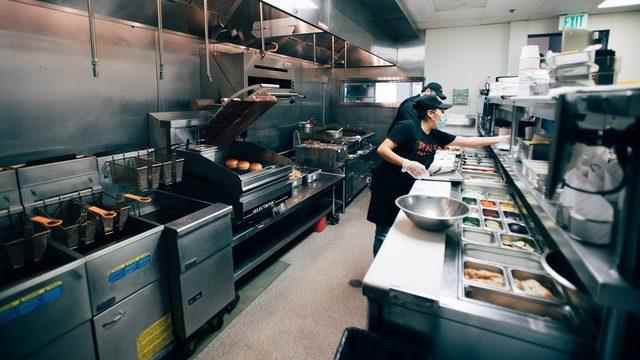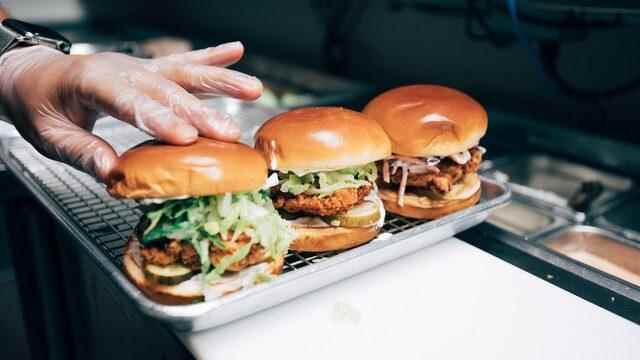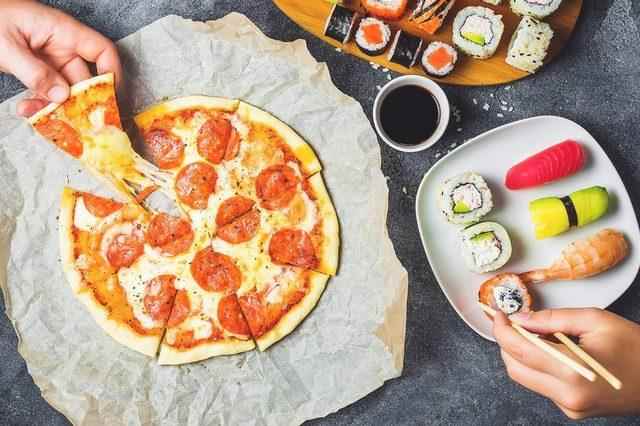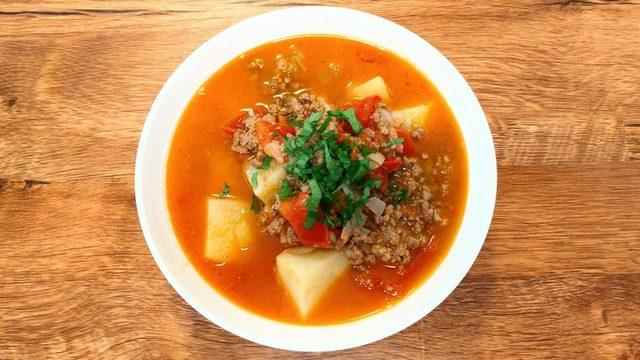Turkish couple, Emre Uzundağ and Yonca Çubuk, who moved to New York in 2020, say their “little dreams have come true” thanks to the food ordering app called Woodspoon they established during the pandemic.
“Woodspoon gives us a platform and voice to tell our story,” says Çubuk. “We’re more than just kebabs and rice. Our best-selling dishes are lentil soup and orange spinach stew; both vegetarian; the latter vegan.”
“Helped many restaurant workers who needed to find a new source of income during the pandemic”
The Turkish couple was stuck in their small apartment in Brooklyn due to the coronavirus.
The couple started cooking more and more Turkish dishes to help them cope with the stress of quarantine while they were homesick abroad. “This was a mental necessity during the pandemic,” says Clover Rod.
They then started cooking for their friends in the city, receiving “incredibly positive” feedback.
Çubuk states that her friends started to say that they should turn this into a career.
Despite not having worked as a professional chef before, they decided to get down to business last year and developed a new food delivery app called Woodspoon.
While market-leading massive delivery apps such as Just Eat, Deliveroo, Uber Eats, and DoorDash, the largest US food ordering app, now list many major restaurant chains, Woodspoon’s business model is completely different.
Fresh, home cooked food
Launched in early 2020, the Woodspoon app connects people who cook at home, rather than a chain restaurant, with customers who want fresh, home-cooked meals.
When you place an order through the Woodspoon app, the detail of your order is sent to the relevant house chef. Later, when the meal is ready, a Woodspoon driver takes the order and delivers it.
Although the app is only available in Brooklyn, New York, there are currently more than 120 cooks registered with the app. Their plan is to expand.
Emre Uzundağ and Yonca Çubuk’s BanBan Anatolian Home Cooking menus are offered four days a week via the app.
The duo are working on new recipes for the other three days. Rod says they were so busy that they even had to work on their fourth wedding anniversary.
However, thanks to Woodspoon, they don’t have to incur the cost of renting a commercial space.
Woodspoon co-founder Lee Reschef explains that launching at the start of the pandemic was actually advantageous: “We were lucky enough to help many restaurant workers who needed to find a new source of income.”
Home chefs must demonstrate they have completed their food safety training before being accepted by Woodspoon; The company is sending someone to inspect their kitchen.
Cooks are also required to register their kitchens with the relevant local authorities and undergo official food hygiene tests.
The priority is to grow in the USA
While Woodspoon’s current priority is to expand into the US, the concept could also work in the UK, where selling food from home is legal.
With restaurants being closed for a long time due to the pandemic, takeaway applications have attracted great interest in the last two years.
Just Eat, the UK’s largest, shared that its revenues rose 42 percent from 2019 to £725m in 2020, while DoorDash’s revenues more than tripled to $2.9bn.
More and more of us are using such apps, but users often cite one disappointment: You can’t order from more than one restaurant at the same time, and you can’t get food from different restaurants delivered at the same time.
But that is now changing with a small number of apps starting to offer food ordering services. The number of these applications is increasing day by day.
“Netflix for food orders” app
Chief among these is the Go By Citizens application, which is operated by the restaurant and takeaway C3 group and offered in the USA. The application allows customers from many different brands such as Umami Burger, Krispy Rice, Cicci di Carne, Sam’s Crispy Chicken to order at the same time.
C3 says it operates 800 “ghost” kitchens across the US to ensure all food is cooked and ready for delivery at the same time. This means warehouse cooking facilities that house several kitchens under the same roof, and they only work for food delivery.

“Our app allows consumers to select and group their favorite menu items from a range of C3 brands at once,” says C3 CEO Sam Nazarian, describing the feature as the “Netflix for food ordering” app.
In addition to its own brands, C3 invites other restaurants and food businesses to its ghost kitchen and tech platform, including California’s Soom Soom Fresh Mediterranean and Florida’s Cindy Lou’s Cookies.
US-based ghost kitchen business Kitchen United now also allows its customers to order from several different restaurant brands at the same time through the Kitchen United Max app.

“Everything can be delivered or picked up at once and on one bill,” says Kitchen United CEO Michael Montagano.
Kitchen United Max currently operates at 10 locations in the USA, and preparations are underway for eight new locations.
In the UK, Deliveroo also runs a group of ghost kitchens called Deliveroo Editions. Takeout businesses are invited for free shop rentals from here. A Deliveroo spokesperson confirmed that meals served through its app must be ordered separately.

Whether focusing on home cooks or allowing customers to order from multiple restaurants at once, is the continued growth of delivery apps putting more pressure on physical restaurants and takeaways struggling to stay afloat?
British food and restaurant critic Andy Hayler thinks some users may find it offensive that an app lets you order food from two or more restaurants at the same time.

“If I had seen a menu that offered two to three different things, I would have thought it was a generic caterer blowing up industrial foods,” Hayler says. says.
Hayler says that in kitchens where presentation is prominent, such as French and Japanese cuisine, they are not very suitable for takeaway, as the food should not be crushed while being transported in a plastic container, and adds:
“[Fransız ve Japon restoranları için] “Half the experience is looking at the food on the plate.”
